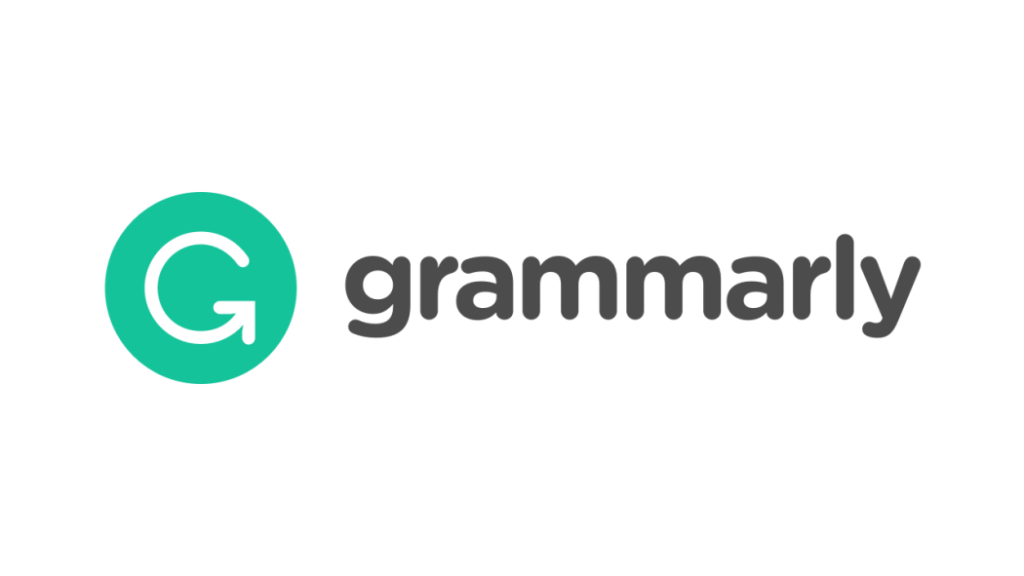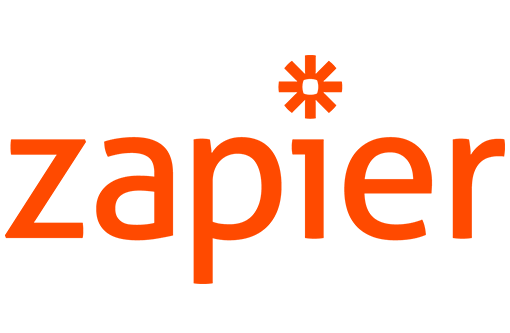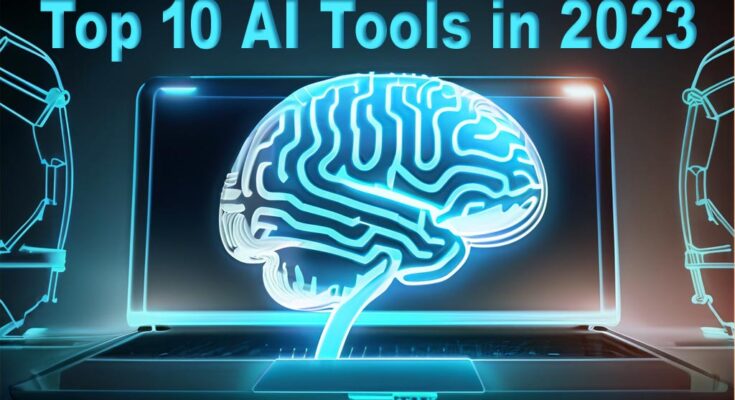Delve into the realm of artificial intelligence with us as we unveil the top 10 AI tools in 2023 that are revolutionizing various industries. These remarkable innovations have been meticulously designed to liberate professionals from the shackles of repetitive tasks, streamline workflows, and elevate overall productivity. Our selection comprises some of the most cutting-edge and extensively adopted tools in the market, each boasting versatility and applicability across a spectrum of domains. From natural language processing wizards like ChatGPT and Grammarly to image and video virtuosos like DALL-E and Lumen5, these AI marvels are poised to redefine
how we work. Additionally, tools like OpenAI Codex, Tabnine, Canva, Jasper AI, and Surfer SEO cater to specific needs, ranging from code comprehension to content creation and website optimization. Dive into the AI universe with us, and discover how these tools can reshape your business or project.
1. ChatGPT
ChatGPT stands tall as a colossal language model, wielding the power to conjure responses that rival human eloquence. Its repertoire includes tasks such as language translation, question answering, and text completion. Equipped with the capacity to navigate diverse topics and writing styles, ChatGPT crafts coherent and fluid prose. However, its potency comes with a caveat: tread carefully, for it may occasionally birth biased, offensive, or factually inaccurate text.

Pros:
- Conjures human-like responses across a multitude of prompts
- Tailorable for specific endeavors like language translation, question answering, and text completion
- Adaptable to a wide gamut of subjects and writing styles
- Crafts articulate and seamless text, even when finishing a given prompt.
Cons:
- Prone to generating prejudiced or offensive content
- May produce text that lacks accuracy or factual correctness
- Demands substantial computational resources for operation
- The model’s coherence and fluency hinge on the nature of the prompt.
In sum, ChatGPT emerges as a potent ally in the realm of natural language processing. Yet, its utilization demands judiciousness and an appreciation of its boundaries.
2. DALL-E

DALL-E, a brainchild of OpenAI, emerges as a generative powerhouse capable of transmuting textual prompts into vivid images. Rooted in the GPT-3 architecture, this transformer-based neural network model has imbibed knowledge from an expansive text dataset. DALL-E’s wizardry extends to producing images reminiscent of its training data and crafting high-resolution visuals fit for commercial deployment.
Pros:
- Crafts high-resolution imagery
- Transforms text prompts into visual art
- Fine-tunable for specialized tasks, including generating images with distinct styles or themes.
Cons:
- May birth images that bear traces of their training data, lacking complete originality
- Requires substantial computational resources for operation
- The quality of generated images may fluctuate based on the specific prompt.
In the grand tapestry of AI, DALL-E is a potent brush that can paint a myriad of applications, from commercial imagery creation to gaming and creative ventures. However, it’s imperative to scrutinize the resultant images and exercise prudence, as they may not be entirely devoid of the training data’s influence.
3. Lumen5
Lumen5, a dynamic content creation platform, harnesses the power of AI to assist users in crafting compelling videos, engaging social media posts, and diverse content formats. Its repertoire of features enhances content creation and marketing endeavors, offering:

Pros:
- Automatic Summarization: Transforms text from blog posts, articles, or other sources into video or social media scripts effortlessly.
- Rich Media Library: Provides access to an array of royalty-free videos, images, and music to enrich content.
- User-Friendly Interface: Employs a drag-and-drop interface for intuitive content creation.
- Multilingual Capabilities: Facilitates the creation of content in multiple languages.
- Built-in Analytics: Offers an in-house analytics tool to monitor the performance of created content.
Cons:
- Content Quality Variation: The quality of generated content may fluctuate based on the source material.
- Summarization Accuracy: The automatic summarization feature may not always capture the essence of the source material.
- Limited Media Library: The library of videos, images, and music is somewhat limited.
- Basic Analytics: The analytics feature is rudimentary in its capabilities.
In essence, Lumen5 emerges as a valuable tool for swift and convenient content creation, streamlining the process of generating videos, social media posts, and various content types. However, vigilance is crucial as content quality may vary depending on the source material, necessitating thorough review and editing before publication.
4. Grammarly
Grammarly, an illustrious writing enhancement platform, harnesses the prowess of AI to meticulously scan text for grammatical, punctuation, and spelling errors. It goes a step further by offering suggestions to enhance text clarity, conciseness, and readability. This versatile tool boasts several features to bolster the art of writing, including:

Pros:
- Error Detection: Proficiently identifies grammar, punctuation, and spelling errors in text.
- Enhanced Clarity: Provides valuable suggestions to augment text clarity, conciseness, and readability.
- Integration: Seamlessly integrates with various applications and platforms such as Microsoft Office, Google Docs, and social media platforms.
- Access Points: Offers browser extensions and a desktop application for convenient access.
- Premium Features: A premium version unlocks advanced features like plagiarism detection and more.
Cons:
- Suggestion Accuracy: The suggestions provided may not always align with the context or be suitable.
- Contextual Limitations: The grammar checker may not consistently grasp context-specific language usage.
- Free Version Limitations: The free version is somewhat limited in its feature set.
- Language Limitation: Limited to the English language.
In sum, Grammarly stands as a valuable companion for enhancing writing skills, efficiently identifying and rectifying grammatical, punctuation, and spelling errors, while also aiding in improving text clarity, conciseness, and readability. However, users should exercise discernment when applying suggestions, as they may not invariably align with the specific context or be entirely suitable.
5. OpenAI Codex
OpenAI Codex, a brainchild of OpenAI, is a groundbreaking system engineered to translate natural language descriptions of software tasks into functional code. This innovative system, underpinned by the GPT-3 model, possesses the remarkable ability to generate code across multiple programming languages.

Pros:
- Automated Code Generation: Streamlines the code-writing process, boosting productivity.
- Enhanced Developer Efficiency: Empowers developers to work more efficiently.
- Accessibility for Non-Technical Users: Opens the door for non-technical individuals to engage in software creation.
- Multi-Language Code Generation: Proficiently generates code across a spectrum of programming languages.
Cons:
- Variable Code Quality: The quality of generated code may vary based on the specificity of the task description.
- Optimization Challenges: The generated code may not consistently be optimal or efficient.
- Complex Task Limitations: Confronts challenges with handling intricate software tasks.
- Reduced Understanding of Code: Over-reliance on the tool might diminish comprehension of the generated code.
In essence, OpenAI Codex stands as a formidable tool, ushering in automation to the code-writing process and democratizing software development for non-technical individuals. However, vigilance is essential, as the quality of generated code hinges on the task description’s clarity, necessitating thorough review and testing before deployment. It should serve as an aid rather than a replacement for a developer’s expertise.
6. Tabnine
Tabnine, a code completion marvel driven by AI, excels in predicting and suggesting code snippets. Its versatility extends across multiple programming languages and harmonizes seamlessly with various code editors.

Pros:
- Enhanced Coding Efficiency: Elevates coding efficiency by contextually suggesting code snippets.
- Complete Code Blocks: Proficiently completes entire code blocks, reducing manual input.
- Predictive Abilities: Predicts variables, functions, and other code elements, streamlining the coding process.
- Editor Integration: Easily integrates with a wide array of code editors.
Cons:
- Suggestion Accuracy Variability: Suggestions may not consistently align with accuracy or suitability.
- Contextual Understanding Challenges: May encounter difficulties in fully grasping the context of complex code.
- Editor Compatibility Constraints: Compatibility with all code editors is not guaranteed.
- Risk of Reduced Code Comprehension: Over-reliance on the tool could diminish the user’s understanding of code.
In summary, TabNine proves to be a valuable asset for developers, enhancing coding efficiency and minimizing the time spent on manual code writing. However, it is imperative to exercise discernment when implementing tool-generated suggestions, as accuracy and suitability may vary. TabNine should be viewed as an aid, complementing a developer’s knowledge rather than replacing it.
7. Jasper AI
Jasper AI is a versatile content creation and generation tool driven by the power of artificial intelligence. It excels in identifying the perfect words and sentences to match your unique writing style and medium with unparalleled efficiency and accessibility.

Pros:
- User-Friendly Interface: Boasts an intuitive interface for seamless usage.
- Diverse Content Creation: Generates a wide spectrum of content types to meet your needs.
- Plagiarism-Free Guarantee: Ensures content is 100% unique and free from plagiarism.
- SEO Optimization: Crafts content with SEO-friendliness in mind, enhancing online visibility.
- Lengthy Articles: Capable of creating articles spanning up to 10,000 words.
Cons:
Cost Consideration: Not the most budget-friendly AI writer available.
8. Surfer SEO
Surfer SEO emerges as a potent software tool tailored to assist website owners and digital marketers in elevating their search engine optimization (SEO) endeavors. This multifaceted tool furnishes an array of features designed to analyze on-page SEO factors, including:

Features:
- Site Audit Tool: Scans for technical SEO issues on websites.
- Content Editor: Offers optimization suggestions for individual pages.
- Keyword Research: Assists in identifying target keywords.
- SERP Analyzer: Provides insights into a website’s keyword rankings.
- Backlink Analysis: Examines a website’s backlink profile.
Pros:
- Technical Issue Identification: Aids in the detection of technical SEO challenges.
- Page Optimization Guidance: Offers valuable suggestions for enhancing individual page performance.
- Keyword Insight: Facilitates effective keyword research.
- Ranking Visibility: Illuminates a website’s performance for specific keywords.
- Backlink Profile Examination: Offers insights into a website’s backlinks.
Cons:
- Subscription-Based: Some features may require a paid subscription.
- No Ranking Guarantee: Utilizing the tool does not guarantee improved search engine rankings.
- Data Dependency: The tool’s analysis is contingent on the data it can access.
- Suggestion Suitability: Recommendations may not always align with applicability or optimization.
In summary, Surfer SEO serves as a valuable asset for website owners and digital marketers seeking to enhance their SEO strategies. However, it’s essential to recognize that it functions as a tool in a broader SEO toolkit and should be complemented by other best practices. Moreover, it does not guarantee improved rankings, and users should exercise judgment when implementing its suggestions.
9. Zapier
Zapier stands as an indispensable web automation tool, empowering users to streamline and automate repetitive tasks by seamlessly connecting diverse web applications. This magic is woven through the creation of “Zaps,” which effortlessly shuttle data between apps and trigger specific actions in one app based on events occurring in another.

Features:
- Extensive App Connectivity: Bridges the gap across a staggering 3,000+ web applications.
- Task Automation: Puts an end to manual repetition by automating routine tasks.
- Zap Creation: Empowers users to construct “Zaps” for the fluid movement of data between applications.
- Event-Driven Actions: Initiates actions in response to events within linked applications.
Pros:
- Task Automation: Drastically reduces manual workload by automating repetitive tasks.
- Time Savings: Frees up valuable time by eliminating the need for manual intervention.
- Enhanced Workflow: Optimizes workflow efficiency, promoting seamless processes.
- Boosted Productivity: Augments overall productivity by connecting and automating web applications.
- App Integration: Harmoniously integrates with a vast array of web applications.
Cons:
- Initial Setup Complexity: Setting up complex “Zaps” may prove challenging.
- Technical Proficiency: May necessitate a degree of technical skill for optimal utilization.
- Paid Subscription Requirements: Certain advanced features may require a paid subscription.
- Compatibility Constraints: Not all applications may be compatible.
- Potential Knowledge Gap: Over-reliance on Zapier could potentially lead to reduced understanding of individual applications.
In summary, Zapier stands as a valuable tool for automating repetitive tasks and streamlining workflow by interconnecting web applications. It delivers time savings and heightened productivity, though users should be prepared for potential setup complexities and exercise caution not to over-rely on the tool, thus retaining a deep understanding of the applications at play.
10. Compose AI
Compose AI is a trailblazing company specializing in the development of Natural Language Generation (NLG) software. Their innovative software harnesses the power of AI to autonomously craft written or spoken text derived from structured data, such as spreadsheets, databases, or APIs.

Features:
- Automated Text Generation: Effortlessly generates written or spoken content from structured data.
- Versatile Data Source Integration: Seamlessly integrates with a wide spectrum of data sources.
- Multifaceted Applications: Applicable for various use cases, including report generation, summarization, and explanations.
API and User-Friendly Interface: Offers both API access and a user-friendly interface.
Pros:
- Content Automation: Automates the creation of written or spoken content, reducing manual effort.
- Enhanced Accuracy: Elevates content accuracy and consistency.
- Time Efficiency: Saves time by automating repetitive content-related tasks.
- Broad Data Integration: Integrates seamlessly with diverse data sources.
Cons:
- Content Quality Variability: Content quality may fluctuate depending on the data source.
- Optimization Challenges: The generated content may not always be optimal or efficient.
- Complex Task Limitations: May encounter difficulties with highly intricate tasks.
- Potential Knowledge Gap: Over-reliance on the tool may diminish user understanding of the underlying data.
In essence, Compose AI’s NLG software serves as a potent tool for automating the generation of written or spoken content from structured data. However, it’s crucial to remember that content quality can vary based on data sources, necessitating a diligent review before deployment. The tool should be seen as a valuable aid, complementing rather than replacing a comprehensive understanding of the data.
Conclusion
In today’s dynamic business and technology landscape, AI tools are pivotal, streamlining operations, and enhancing productivity. This article has unveiled the top 10 AI tools, showcasing their prowess in automating tasks, refining workflows, and boosting efficiency. Whether your needs revolve around mastering natural language processing, creating high-resolution imagery, or optimizing web presence, there’s an AI tool ready to assist. It’s paramount to conduct thorough research to determine the perfect fit for your specific requirements. As AI technology continues its evolution, these tools will only grow in power and versatility, shaping the future of business and technology.




